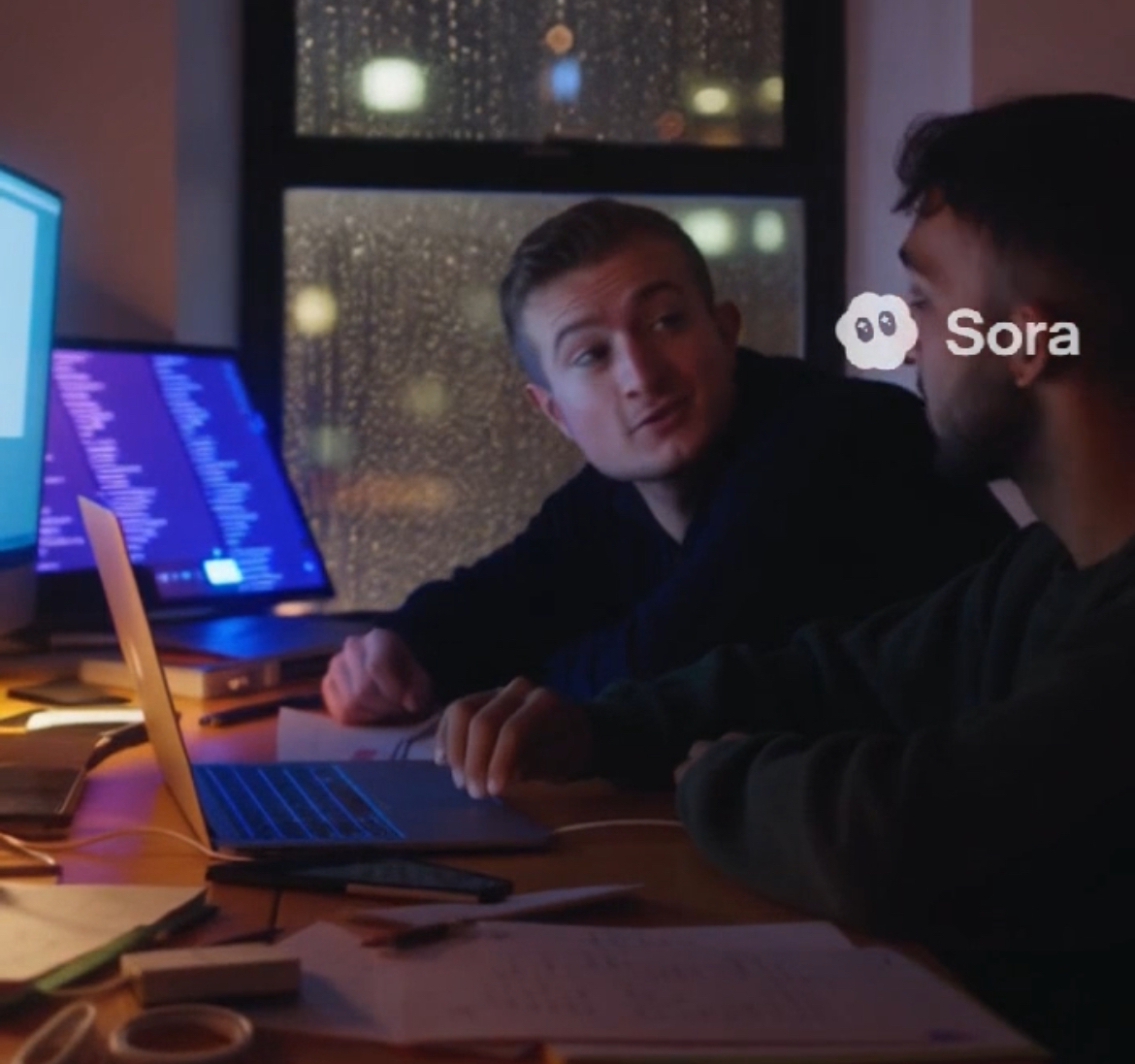Sora Is Here: How to Use It, Create Cameos, and Lead the Next Wave of AI Advertising

When Sora was announced, it moved AI video from concept to craft. It takes a few lines of text and produces fully coherent video . motion, camera work, lighting, physical realism included. What used to need a studio now starts with a sentence.
This isn't about hype. It's about how to actually work with Sora: planning scenes, creating short cameos, and building creative workflows for brands.
1. What Sora Does Well
Sora builds short video sequences from text. The model doesn’t just generate frames . it predicts how objects move, how light behaves, and how time passes in a scene.
That’s what makes its clips feel consistent rather than stitched together.
The best results come when you treat prompts like storyboards. Be precise about the scene and motion before describing what happens in it.
Example: “A handheld shot of a barista closing a neon coffee shop late at night, camera panning right, steam rising.”
The model understands camera language. It responds to words like handheld, wide angle, or slow pan. Give it those signals before dialogue or mood.
2. Building Useful Prompts
Start with a single moment rather than a whole story.
If you want continuity, generate multiple short clips and join them later in an editor.
Good prompt structure:
- Setting: where the scene happens
- Motion: how the camera behaves
- Mood: tone, lighting, pace
- Focus: what the viewer should notice first
A second pass can refine details.
“Keep the lighting from version 2, but replace the subject with a runner tying her shoes at dawn.”
Small, direct changes like that make Sora reliable instead of random.
3. Cameos and Identity
Sora allows you to upload a few frames of a person or product and blend them into generated clips. That’s useful for brand or personal projects . short appearances, founder intros, or tutorials.
Upload reference images with clear lighting and neutral backgrounds. Then describe context:
“Use the same person from the photo, standing in a futuristic Tokyo street at sunset, camera orbiting slowly.”
It will match the posture and lighting, not just the face. Used carefully, that means a team or creator can appear in multiple videos without reshooting footage.
For brands, this is a way to keep a consistent visual voice with the same style of person, tone, or motion across dozens of short clips.
4. Turning It Into a Brand Tool
Treat Sora like a draft stage, not final production.
You can test visual ideas quickly, then scale only what resonates.
A simple process:
- Sketch a few visual directions with prompts (different tones and moods).
- Test short cuts on social channels or focus groups.
- Localize winning ideas with new language, new faces, same core footage.
- Scale by refining color, typography, and motion for specific markets.
This "prompt–test–adapt" loop lets teams explore creative directions before spending heavily on production.
5. Writing Prompts for Ads
Advertising prompts work best when they mix visual accuracy with emotional intent.
Example pattern: Aerial view of Istanbul at golden hour. Calm, optimistic tone, soft background music. A minimalist black box moves through the city, subtle reflection of a logo on glass. The moment feels like anticipation before a launch.
Think in film grammar.
If you ask for “innovation,” the model might show precision tools, quick cuts, or people focusing intensely. Describe mood through imagery rather than adjectives.
6. Using Sora for Testing Ideas
You can build and test creative hypotheses in a day.
Generate five clips that express different emotions like confidence, comfort, discovery, nostalgia, energy and run them through A/B tests. Track which tone performs best. Then regenerate longer or localized versions using that base.
It’s faster, cheaper, and gives designers feedback on narrative before production.
7. Practical Rules for Using Cameos
When generating clips with real people or likenesses:
- Use your own or team footage. Never someone else's without permission.
- Keep lighting and angle consistent with the prompt.
- Add captions or disclaimers when the scene blends AI and reality.
Audiences spot synthetic content easily now. Transparency earns more trust than pretending it’s live action.
8. Becoming an Early Mover
Right now, there’s space for brands and creators who experiment. Not by chasing novelty, but by learning the language of prompt-based direction.
If your team starts building a library of scenes, moods, and compositions now, you’ll be able to produce fast, coherent campaigns when others are still learning.
It's not about replacing crews or editors. It's about storyboarding at speed. The companies that learn that rhythm first will adapt best as AI video becomes standard.
9. First Project to Try
A simple exercise:
- Visual Hook
“A single coffee bean falling in slow motion through sunlight.” - Narrative
“Cut to someone taking the first sip before sunrise. Add the line: ‘Every morning deserves a story.’” - Variants
- Minimalist white background
- Warm cinematic tone
- Hand-drawn style
That's three full ad directions from one idea. The result doesn't have to be perfect. It just has to make a concept visible enough to discuss.
10. What This Changes
Sora doesn't remove the need for filmmakers or designers. It shifts the creative act earlier in the process, from camera to language.
Those who can describe scenes clearly will lead.
Those who wait for others to define the look will follow.
The advantage isn't automation. It's feedback: faster cycles, clearer communication, and visual ideas that no longer live only in a pitch deck.